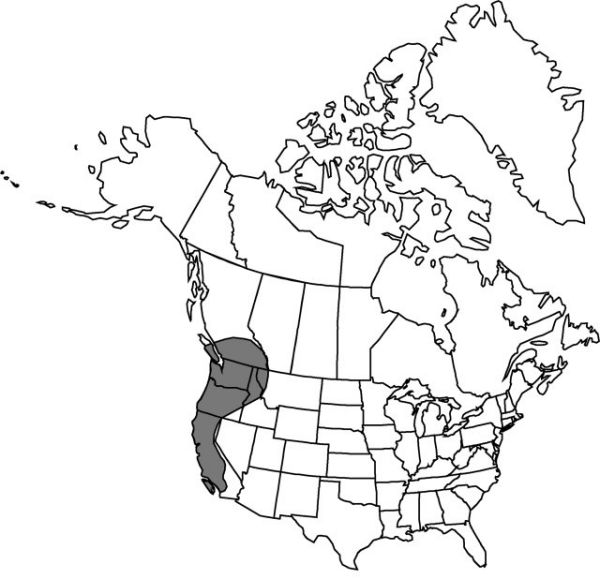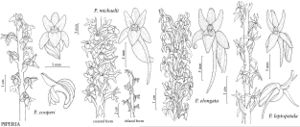Difference between revisions of "Piperia elongata"
Bull. Torrey Bot. Club 28: 270. 1901.
FNA>Volume Importer |
FNA>Volume Importer |
(No difference)
| |
Revision as of 19:29, 24 September 2019
Plants (9–)14–130 cm. Stems ± uniform toward tuberoid, 1–12 mm diam. distal to leaves; bracts 4–22. Leaves prostrate; blade 7.5–32 × 1–8.4 cm. Inflorescences sparsely to densely flowered, (3.5–)6–70 cm; rachis usually longer than peduncle; bracts 5–20 mm. Flowers green; fragrance when present nocturnal, faint, harsh to honeylike; sepals 2.4–6 × 1.1–3 mm; dorsal sepal ovate; lateral sepals spreading to recurved, ± obliquely lanceolate to oblong; petals erect-spreading, ± falcate, ovate-attenuate, 3–6 × 1.5–2.5 mm, inner margins forming U; lip becoming strongly deflexed, triangular-lanceolate, 2.1–5 × 1.2–3.4 mm; spur curved, mostly deflexed, (7–)9–15(–18) mm; viscidia broadly elliptic-ovate, 0.4–0.6 × (0.2–)0.3–0.4 mm; rostellum blunt. Capsules 4–11 mm. Seeds cinnamon brown. 2n = 42.
Phenology: Flowering May–Sep.
Habitat: Forest chaparral, dry, open sites, usually away from the immediate coast
Elevation: 0–1600 m
Distribution

B.C., Calif., Idaho, Mont., Oreg., Wash.
Discussion
Plants of the California Channel Islands are smaller, have narrower viscidia than typical plants, and flower earlier (May–June).
Selected References
None.
